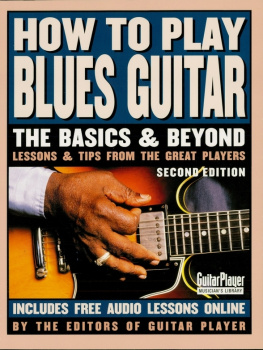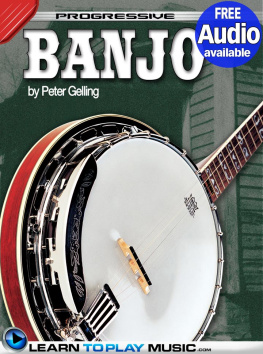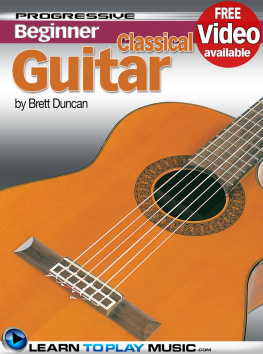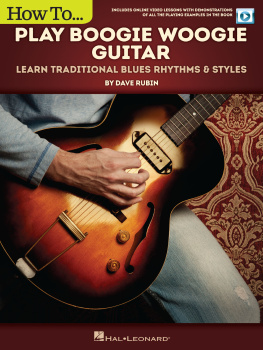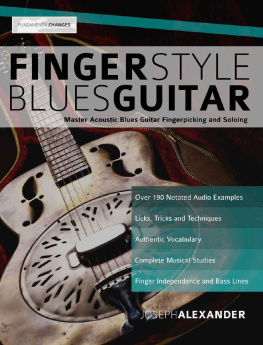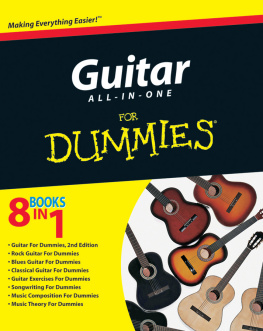How to Play the 3-String
Cigar Box Guitar
Fingerpicking the Blues
By Rick McKeon
Copyright 2018 Rick McKeon
https://www.rickmckeon.com
Cover Photo by Wayne Bigler
www.biglerguitars.com

H i, I'm Rick McKeon , and I would like to welcome you to this exciting program about how to play the 3-string cigar box guitar!
In recent years the cigar box guitar has become very popular. The early blues musicians couldn't afford expensive instruments, so they built their own. Start with a cigar box, add a stick and some wire, and voila! You have a guitar to express your music.
Today cost may not be the most important factor, but there is a resurgence of these instruments. We are fascinated by how the early blues players got such expressive music from their simple instruments. But there's more to it than that. Here's the key:
"Less is more"
H aving only three strings to work with might seem limiting, but its limitation is also its greatness! We need to make the most of what we have. This means that we need to play each note with expression and feeling. That's what makes the music come alive! The music has to come from the player, not just the instrument. This approach is an excellent way to realize that less can actually be more if you make it so!
In this book (together with the online video lessons) you will learn the basics of right and left hand technique, chord construction, fingerpicking and slide playing, together with jamming and improvising on the blues.

| The Ten Mile Stomp Still wondering if this book is for you? Have a listen to Video Track #14 on the Ten Mile Stomp. http://rickmckeon.com/3-string.html |

| Tips and Tricks When you see this little guy, you know he is offering some interesting tips or just a silly comment to lighten things up. |

| Online Video Lessons All of the playing examples and jam tracks in this book can be found at: http://rickmckeon.com/3-string.html |
If you are interested in the technical stuff, or want to find a Figure or Table quickly you can jump right to the appendices.
We have an exciting musical adventure waiting for us. So, let's get started!

| Video Track #1: Welcome! In this video track I welcome you to this exciting program and give an overview of what you will learn. I am always pleased to answer your questions. Just shoot me an email at rmckeon5@gmail.com. |
1.1 Strings and Tuning

1.1.1 Strings and Pitch
T here are three things that affect the pitch of a vibrating string:
- The length of the string. Fretting a string shortens it, and causes it to vibrate at a higher pitch.
- The mass or diameter of the string. Heavier gauge strings vibrate more slowly and are used for lower notes.
- The tension of the string. Using the tuning peg to increase the tension of a string will raise its pitch.
You may have heard that the old blues guys used to pull their strings from the back porch screen door. Well, we have it a lot easier today. We don't usually think about it, but a lot of engineering has gone into the design and production of modern guitar strings.
All strings are designed to have a certain amount of tension for any given scale length. The "scale length" is the distance from the nut to the bridge. You can imagine that the scale of a soprano ukulele is way shorter than that of a bass guitar.
So where do we get strings for a cigar box guitar? Fortunately, most CBGs have a scale similar to regular 6-string guitars (somewhere around 24" to 25.5") so we can use strings designed for a standard guitar. It's important to choose the right ones for the tuning you are going to use. Why?
If you crank up the tension too much trying to reach a note the string wasn't designed for, you WILL break the string (I speak from experience). If you slacken a string too much trying to lower it to a note it wasn't designed for what happens? It becomes too sloppy and won't project properly. Also, a string that is too loose will buzz.

| You're probably wondering, "How can a guy as smart (and good looking) as you break a string?" Well, some strings for 6-string guitars come packaged in just three envelopes (1&4), (2&5) and (3&6). I got confused and put the wrong string in the wrong place. OK, so maybe I'm not as smart as I think I am! |
O n a more serious note , I always wear glasses when changing strings. Not just so I can better see what I am doing (a good reason in itself), but they also provide some eye protection just incase a string snaps. I once had a student who had one of his eyes put out when a string broke.
So, what am I saying? You can tune a string a little higher or a little lower than the pitch it was designed for (no problem with a whole step either direction) but it is important to start with the right string. In Section 1.1.3 we'll talk in more detail about the strings to use for G, D, G tuning.
Next page






